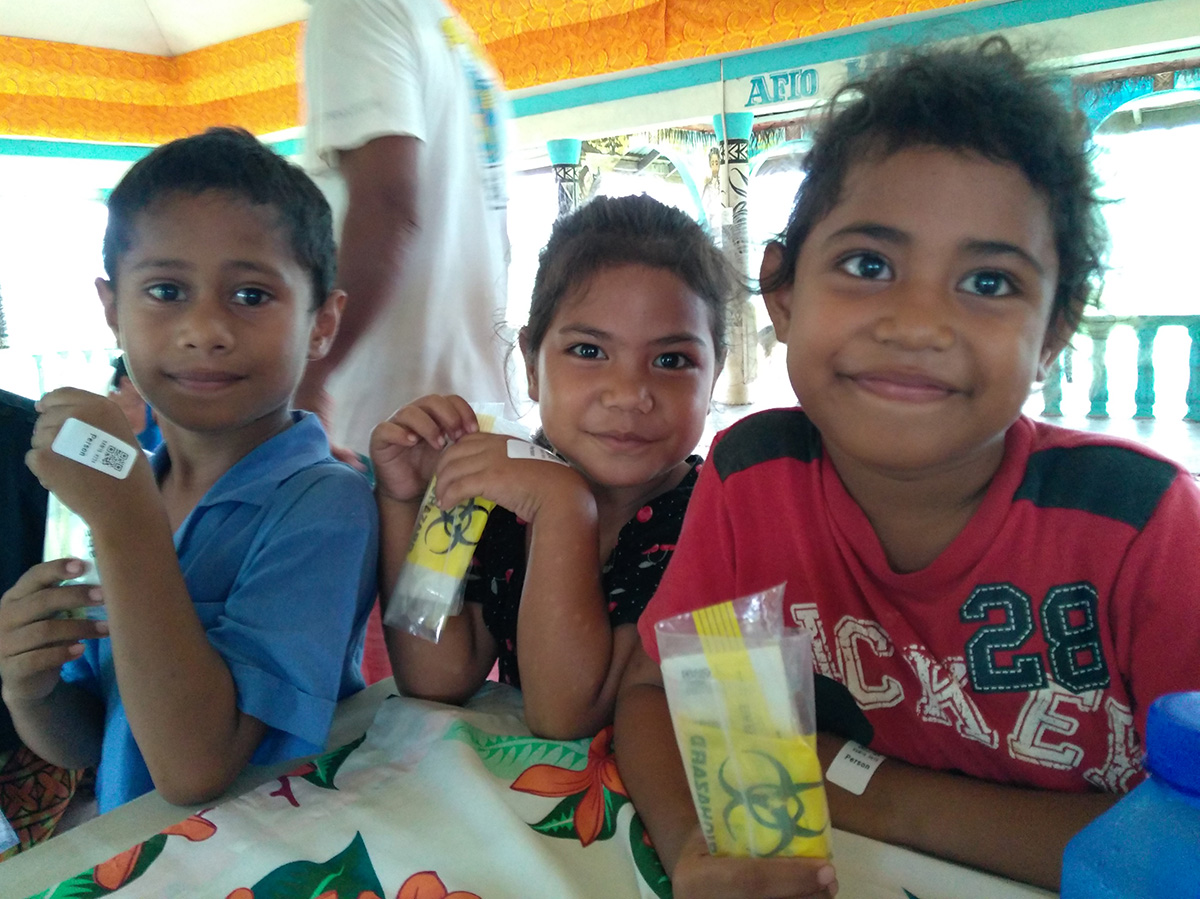Engaging communities to eliminate elephantiasis in Samoa
 In the fight against diseases like lymphatic filariasis (LF), community engagement plays a pivotal role in achieving success.
In the fight against diseases like lymphatic filariasis (LF), community engagement plays a pivotal role in achieving success.
Lymphatic filariasis, commonly known as LF, is a debilitating disease transmitted through mosquito bites, affecting millions worldwide.
In fact, it's estimated that over 51 million people are currently infected with LF globally, with around 36 million suffering from complications such as severe irreversible swelling of the legs, sometimes called elephantiasis1.
In Samoa, significant strides have been made in combating LF.
Decades of effort by the Pacific Program to Eliminate LF (PacELF) have led to a significant reduction in the number of infected people.
Despite this program’s success, pockets of persistent transmission remain which, if left untreated, pose a serious risk of LF resurgence, potentially undermining the progress made thus far.
Enter Dr Helen Mayfield, a data modeller in UQCCR’s program on Operational Research and Decision Support for Infectious Diseases (or ODeSI for short) who believes in the importance of knowing the story behind the numbers.
Helen is at the forefront of the battle against LF in Samoa, working closely with the Samoa Ministry of Health to devise and implement strategies to identify and respond to these pockets of transmission.
As a country works towards elimination, finding the remaining cases of LF becomes increasingly challenging.
"It's like finding a needle in a haystack," said Dr Mayfield.
She emphasises that success is more achievable when you know where to look.
This knowledge, she stresses, is best found when scientists and the communities work hand in hand, sharing knowledge and expertise.
Community involvement is not just desirable but essential.
Local communities inherently possess a deep understanding of their surroundings, making them invaluable partners in disease detection efforts.
Professor Colleen Lau, head of the ODeSI team, highlights the importance of engaging with communities.
"Village leaders, local nurses, and community members inherently have a greater understanding of where to focus disease detection efforts and how to approach and engage the public in ways that support our work as disease detectives," said Professor Lau.
When the ODeSI team approach a village to conduct surveys, they don't just arrive with their scientific expertise; they come with open ears and a willingness to learn.
Working in partnership with the Samoa Red Cross, they sit down with village leaders and engage in two-way dialogue, explaining the science behind LF and seeking advice from community members.
This collaborative approach provides a more complete understanding of the location context, where risk of LF remains and what the barriers to elimination may be.
All this leads to better public health strategies tailored to local needs and context.
Through this collaborative effort, Dr Mayfield and the ODeSI team are not only combating LF but also fostering a sense of ownership and empowerment within the communities they work.
By involving local stakeholders in the decision-making process, they are laying the groundwork for sustainable health outcomes long after lymphatic filariasis is eliminated.
1World Health Organization (2023) Lymphatic filariasis: key facts. Accessed: 28 Feb 2024. Available from: https://www.who.int/news-room/fact-sheets/detail/lymphatic-filariasis
